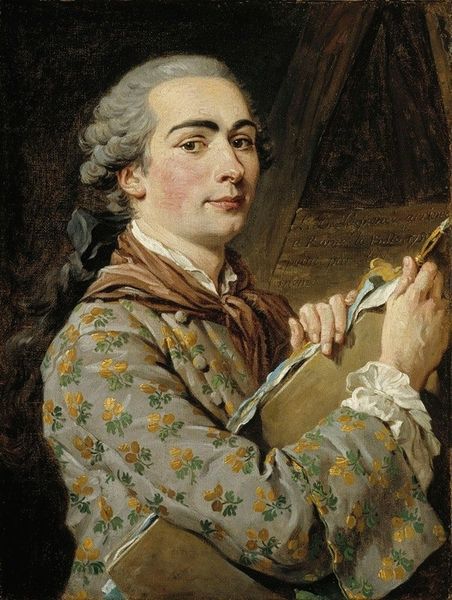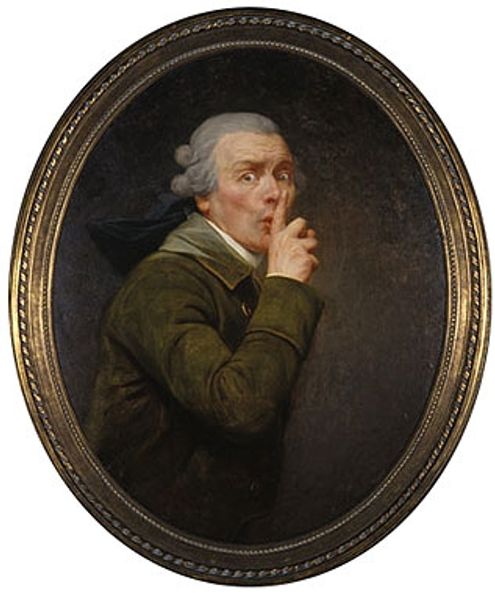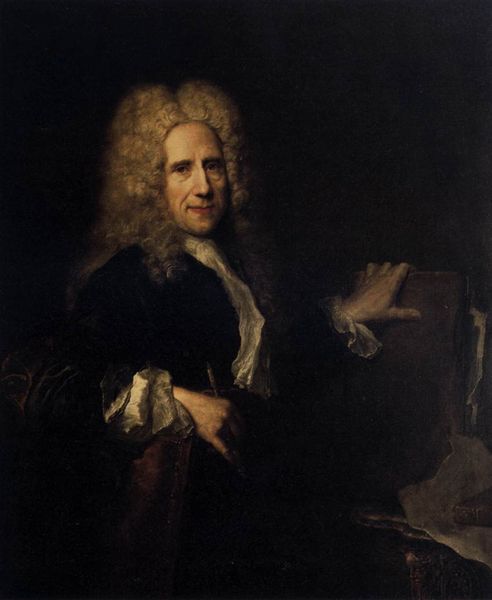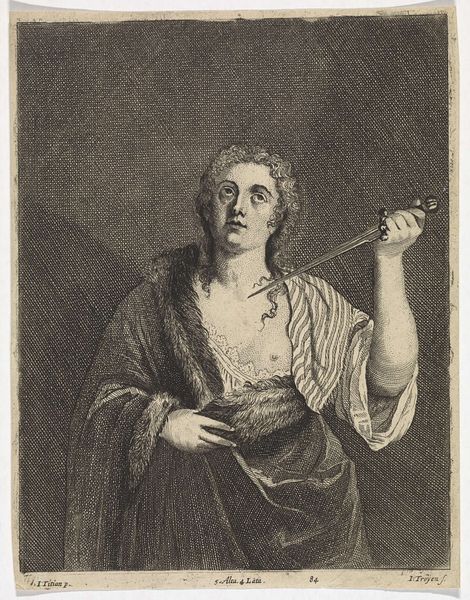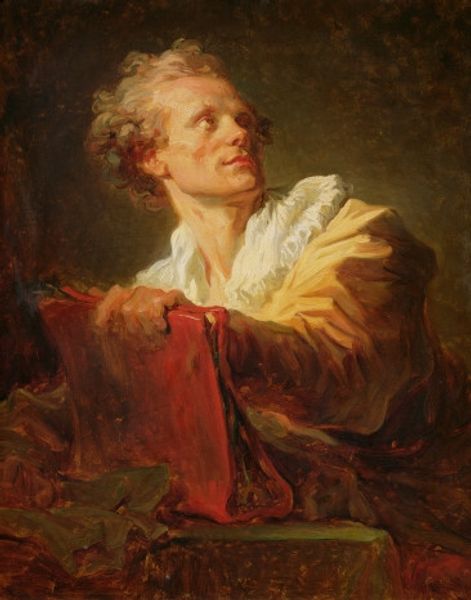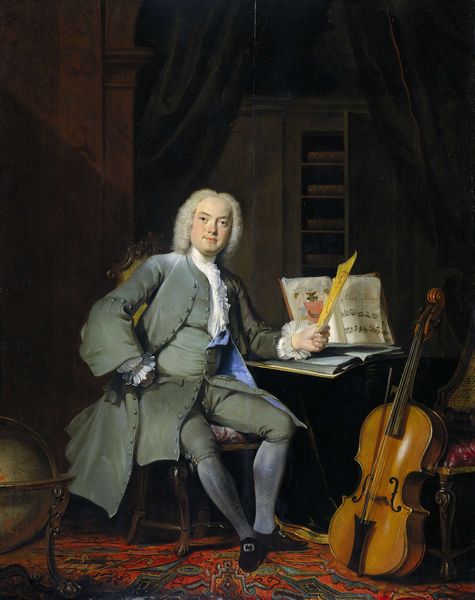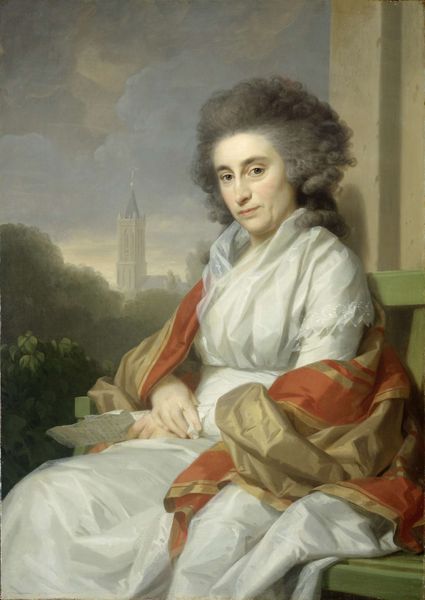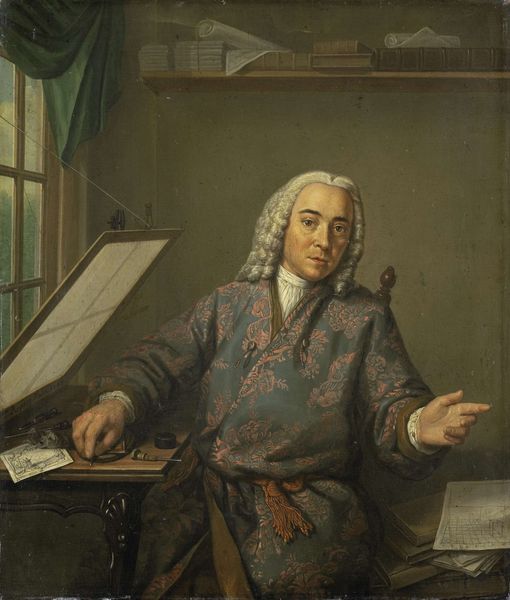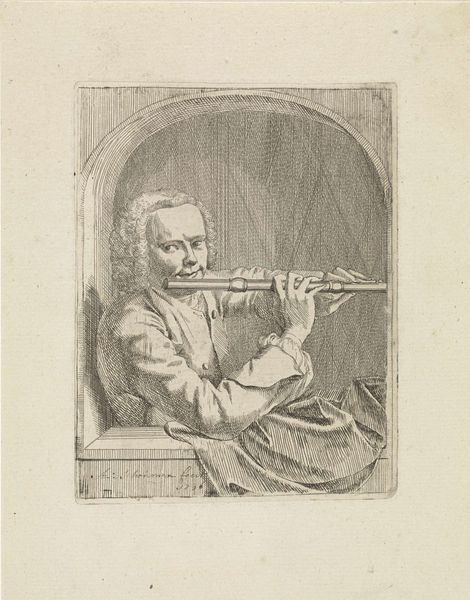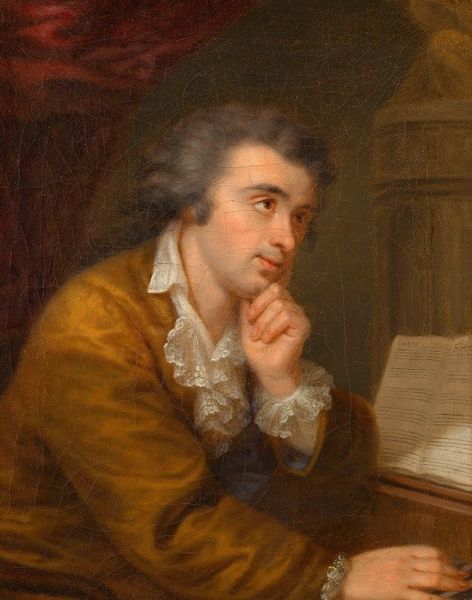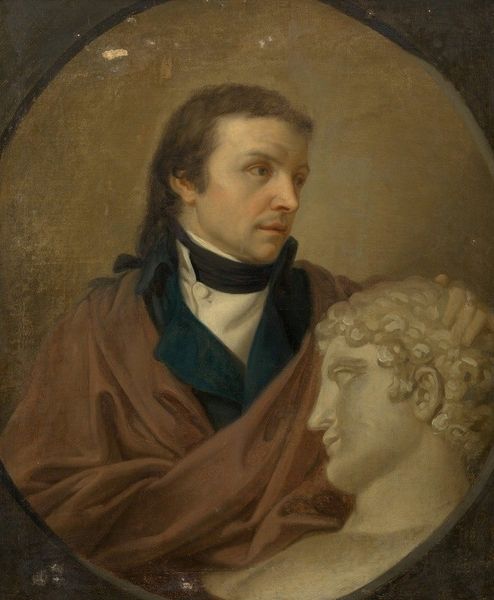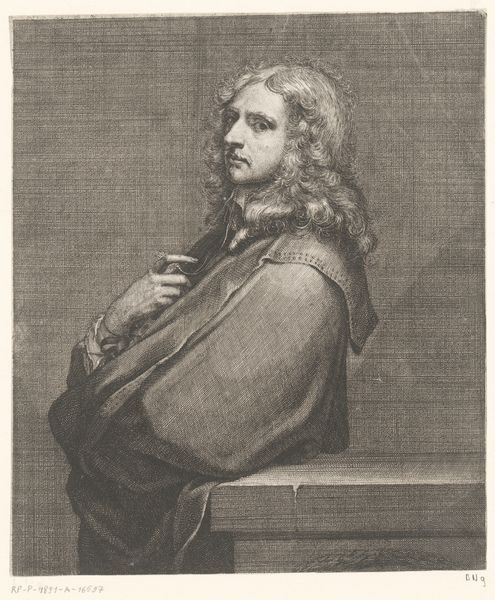
#
figurative
#
character portrait
#
possibly oil pastel
#
portrait reference
#
portrait head and shoulder
#
underpainting
#
animal drawing portrait
#
portrait drawing
#
facial portrait
#
portrait art
#
celebrity portrait
Copyright: Public Domain: Artvee
Editor: This is Jean-Baptiste Greuze's portrait of Ange Laurent de La Live de Jully, circa 1759. It feels like a very staged scene. Almost like propaganda. How do you read this piece? Curator: It's a fascinating glimpse into the performance of status in 18th-century France. Consider the context: Jully was a wealthy and influential figure, a patron of the arts. This portrait isn't just a likeness; it's a carefully constructed image meant to convey his sophistication and refinement. Editor: Right, the harp and the elegant clothing. It all speaks to wealth. Was it common for portraits to highlight these aspects of a person's life? Curator: Absolutely. Portraiture at this time served a very public function. It was a way for the elite to project an image of power, taste, and moral virtue - or what they wanted others to perceive as such. Notice the subtle details. How the light catches his silk robe. The carefully arranged sheet music behind him. What do those details suggest to you about the intended audience and its values? Editor: That the sitter wanted to be seen as accomplished, maybe even intellectual, someone with delicate artistic sensitivities. It feels like he is trying to say something about the society of the time. Curator: Precisely. Greuze, even with his remarkable artistic skill, was complicit in visually reinforcing the social hierarchies of the Ancien Régime. Art, at this time, was rarely separate from politics. Considering the French Revolution was on the horizon, it makes you wonder how effective those projections of control truly were. Editor: I never considered how actively these portraits performed social roles. It makes me look at art of this period in a new light! Curator: Exactly. Analyzing art as a product of its time, embedded in power structures, reveals much more than just aesthetic preferences.
Comments
No comments
Be the first to comment and join the conversation on the ultimate creative platform.
